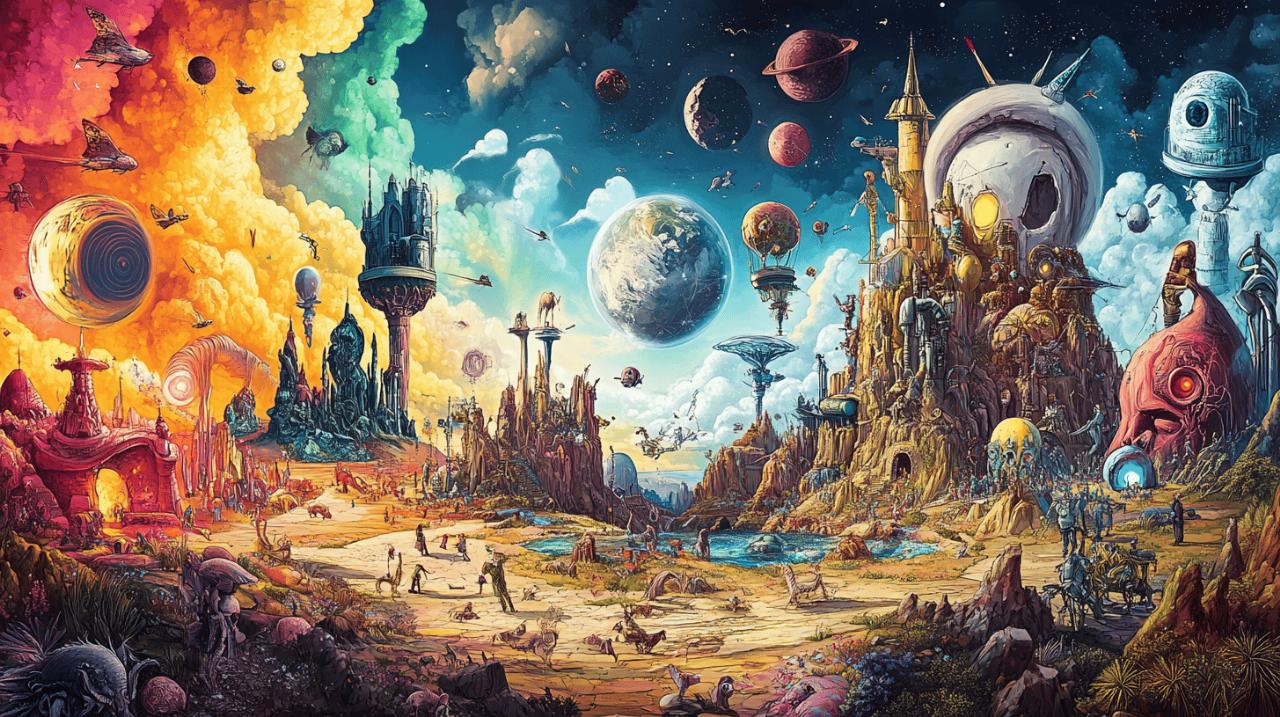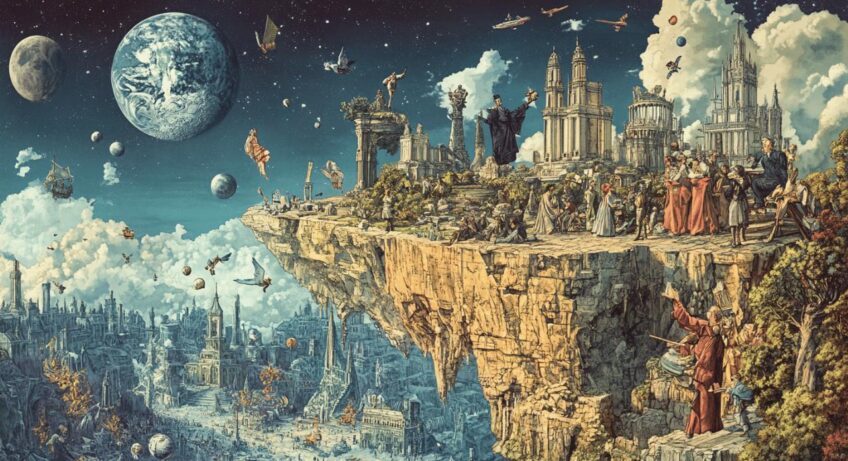The march of human progress, once measured by our ability to harness fire and construct civilisations, has taken a rather curious turn in recent decades. Where our ancestors gathered around flickering flames to share stories and forge genuine bonds, we now huddle over glowing screens, thumbs poised to broadcast carefully curated versions of ourselves to an audience we'll likely never meet. This peculiar transformation from authentic connection to digital performance has unfolded with such speed that we've scarcely noticed how profoundly our social fabric has been rewoven by algorithms and avatars.
From cave paintings to profile pictures: a brilliant descent
Our forebears etched their existence onto cave walls, leaving behind handprints and depictions of hunts that spoke of survival and community. These early expressions were raw, unfiltered testaments to human experience. Fast forward millennia, and we find ourselves compulsively capturing moments not to preserve memory, but to engineer perception. The online persona has become an extension of our identity, a carefully constructed facade that bears only passing resemblance to the messy, complicated individuals behind the screen. Research from Cambridge's Psychometrics Centre reveals that our digital footprints, from Facebook likes to Twitter behaviour, create surprisingly accurate portraits of our personality traits, yet these portraits often reflect who we wish to be rather than who we truly are.
When selfie sticks became our primary tools
The emergence of the selfie stick as a ubiquitous accessory represents a watershed moment in human evolution, though not quite the triumph of ingenuity our species might have hoped for. Where early humans fashioned tools to hunt, build, and create, we've engineered devices to extend our arms just far enough to capture the perfect angle of our own faces. The average UK adult now spends over twenty hours weekly online, with roughly a third of that time devoted to social networking. This isn't merely a shift in how we spend our leisure hours; it's a fundamental restructuring of how we understand ourselves and our place in the world. We've become our own documentarians, directors, and publicists, endlessly crafting content that broadcasts an idealised version of existence whilst the genuine article unfolds unnoticed.
The extinction of face-to-face conversations
The art of conversation, once humanity's primary vehicle for connection, has been relegated to endangered status. Where dialogue once required presence, attention, and the vulnerability of real-time exchange, we now communicate through carefully edited messages that allow us to craft responses at leisure, stripped of the spontaneity and authenticity that define genuine human interaction. The gradual erosion of face-to-face communication skills hasn't occurred through malice but through convenience. Why navigate the uncertainty of a phone call when a text message will suffice? Why endure the awkwardness of small talk when emoji reactions can convey sentiment without effort? We've traded the richness of human presence for the efficiency of digital exchange, and the cost has been steeper than we're willing to admit.
The digital tribe: how we've swapped campfires for comment sections
Our ancestors formed tribes around shared struggle and mutual dependence. Survival demanded cooperation, trust, and the kind of bonds that could only be forged through shared experience. The modern digital tribe operates under entirely different principles. We cluster around hashtags and viral content, forming communities based not on proximity or necessity but on algorithmically determined common interests. The platforms that host these gatherings have become increasingly adept at keeping us engaged, employing social media algorithms designed to serve us content that confirms our existing beliefs and triggers emotional responses. Comment sections have replaced the communal gathering space, but unlike the campfire which demanded civility through proximity, online discourse often descends into performative outrage and virtue signalling.
Why emoji reactions have replaced genuine emotions
The human emotional spectrum, that vast and complex range of feelings that define our inner lives, has been distilled into a handful of cartoon faces. Joy, sadness, anger, love—all neatly packaged into clickable icons that require no genuine emotional investment. This simplification of sentiment represents more than mere convenience; it's symptomatic of our broader retreat from authentic emotional engagement. When faced with a friend's difficult news, we no longer need to summon the courage for a difficult conversation or the empathy to sit with their pain. A sad face emoji suffices, a symbolic gesture that acknowledges suffering without demanding any actual emotional labour. We've become fluent in the language of digital emotion whilst simultaneously losing our ability to navigate the messy, complicated terrain of genuine human feeling.
The Art of Curating a Life Nobody Actually Lives
The construction of an online identity has evolved into an art form, albeit one that prioritises aesthetics over authenticity. Every photograph is filtered, every caption carefully composed, every moment scrutinised for its potential to generate engagement. The result is a digital landscape populated by idealised versions of real people, each projecting an image of success, happiness, and perpetual adventure. The disconnect between curated online persona and lived reality has become so pronounced that it shapes not only how others perceive us but how we perceive ourselves. We begin to measure our lives against the impossible standards we've collectively created, forgetting that everyone else is engaged in the same elaborate fiction. The online persona has become more real to us than the flawed, struggling humans we actually are.
38 satirical images that'll make you laugh and cringe simultaneously
 Visual satire has long served as society's mirror, reflecting our absurdities back to us with exaggerated clarity. The collection of images depicting humanity's digital devolution captures this moment in our species' journey with brutal honesty. From depictions of entire families gathered in the same room yet absorbed in separate screens, to illustrations of people photographing meals instead of eating them, these images chronicle our spectacular regression from social creatures to isolated broadcasters. They're funny because they're true, and they're uncomfortable because recognising ourselves in these caricatures forces us to confront how far we've drifted from the connections that once defined us.
Visual satire has long served as society's mirror, reflecting our absurdities back to us with exaggerated clarity. The collection of images depicting humanity's digital devolution captures this moment in our species' journey with brutal honesty. From depictions of entire families gathered in the same room yet absorbed in separate screens, to illustrations of people photographing meals instead of eating them, these images chronicle our spectacular regression from social creatures to isolated broadcasters. They're funny because they're true, and they're uncomfortable because recognising ourselves in these caricatures forces us to confront how far we've drifted from the connections that once defined us.
Visual evidence of our spectacular social regression
Each satirical image functions as anthropological evidence of a species that has voluntarily surrendered its most distinctive advantage: the capacity for deep, meaningful connection with other humans. We see illustrations of wedding guests watching the ceremony through their phone screens rather than being present in the moment. We observe depictions of groups sitting together in silence, each absorbed in their own digital universe. These aren't exaggerations but barely disguised documentations of contemporary reality. The images work precisely because they require so little artistic licence. The gap between satire and reality has narrowed to the point where distinguishing between them has become nearly impossible. We've become our own parody, and these images simply make explicit what we've been too distracted to notice.
When memes became more important than meaningful dialogue
The meme has emerged as the lingua franca of internet culture, a form of communication that distils complex ideas into easily digestible, shareable units. Whilst there's undeniable cleverness in the meme format, its dominance represents a troubling shift away from sustained, nuanced conversation. Why engage with the complexity of an issue when a witty image macro can convey a position whilst simultaneously signalling tribal allegiance? The meme culture has trained us to think in soundbites and react in snippets, eroding our capacity for the kind of thoughtful engagement that genuine dialogue requires. We've become expert at broadcasting our opinions but increasingly incapable of actually discussing them. The marketplace of ideas has been replaced by a marketplace of memes, and substance has been sacrificed on the altar of shareability.
The Bloke Behind the Screen: What We've Lost in Translation
Behind every carefully crafted online persona sits an actual human being, complete with insecurities, contradictions, and a deep need for genuine connection. The tragedy of our digital age isn't that we've embraced technology but that we've allowed it to mediate our humanity to the point where the mediator has become more important than what it mediates. The bloke scrolling through his feed at three in the morning isn't finding connection; he's avoiding the discomfort of its absence. The woman compulsively checking her notifications isn't engaged with community; she's seeking validation from strangers because genuine self-worth has become increasingly elusive. We've built elaborate digital structures but forgotten to ask whether they're serving our fundamental human needs or simply distracting us from their absence.
Why validation through likes has become our primary currency
The transformation of social validation into a quantifiable metric represents one of the more insidious developments of the social media age. Our brains, evolved to seek approval from our immediate social group as a survival mechanism, have been hijacked by platforms that deliver dopamine hits in response to digital engagement. Each like, comment, and share registers as social validation, triggering reward pathways that keep us returning for more. The problem isn't that we seek validation—that's deeply human—but that we've outsourced it to algorithms designed not to fulfil our social needs but to maximise our engagement. Platforms use search engine algorithms and social media algorithms that determine what content we see based not on what's true or meaningful but on what keeps us scrolling. We've become trapped in a cycle where our sense of worth depends on metrics controlled by entities whose interests aren't aligned with our wellbeing.
Reclaiming Authentic Human Connection in a Filtered World
The path back to genuine connection doesn't require abandoning technology but rather reclaiming our humanity from it. This means recognising that the carefully curated digital identity we've constructed is a poor substitute for the messy, imperfect reality of actual personhood. It means choosing presence over performance, vulnerability over perfection, and genuine conversation over performative broadcasting. The challenge isn't technical but cultural. We must collectively decide that authentic connection matters more than digital validation, that being seen truly is more valuable than being seen perfectly. This requires courage because vulnerability is uncomfortable and genuine connection demands emotional risk. But the alternative—a world of isolated individuals performing for each other across digital divides—isn't sustainable. We're social creatures by nature, and no amount of technological innovation can change that fundamental truth. The question isn't whether we'll return to genuine connection but whether we'll do so before we've forgotten what it looks like. The satirical images that make us laugh and cringe serve as both warning and invitation: we can continue down this path of increasing isolation and performative existence, or we can choose to be human again in all its complicated, unfiltered glory. The choice, for now at least, remains ours.

